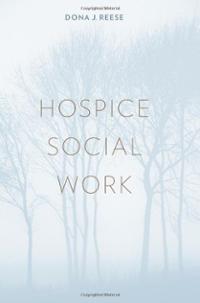 Author: Dona J. Reese
Author: Dona J. Reese
Publisher: Columbia University Press – 348 pages
Book Review by: Laxmi Chaandi
The news of a terminal illness in a patient is often devastating to loved ones, whether that news strikes them suddenly or dawns upon them slowly. To learn – that there is no cure currently available for the particular disease or set of multi-organ failures that afflict the family member, and to realize that the only open option is to let nature take it course and let the patient die – can be mind-numbing.
To let grief take over you and cry all you can and want to, can actually relieve tension. This I speak from a personal experience involving a family friend. When such an event occurs and reality sets in, the best one can do is to make the last days of a loved one as comfortable as possible.
When the only possible outcome is death, the patient is transferred from a hospital into a hospice, which provides end-of-life care. This is a place where palliative or non-curative care is provided, since no treatment is currently available that will cure the patient of his or her condition, and the only eventuality is death.
Besides clinicians and nurses, priests, researchers and social workers are often found in hospices. And of course, family and friends.
The author was a longtime practitioner of hospice social work and has broad experience dealing extensively with terminal-illness patients, their friends and families, professional associates, and members of various groups, organizations and communities.
She has confronted the personal and professional challenges of such life-changing work. So this book is not only based on her academic and teaching background in social work, but also the practice of her profession in a hospice setting.
So what can we learn from this book, and what does it add to the current research and literature on hospice social work?
One of the valuable lessons we learn from it is that the author discovered that there are no clear, established boundaries between continuing to seek solutions to diseases patients have on the one hand, and placing them into palliative or hospice care, on the other hand.
For example, experimental treatments are available that patients or their family members may want to try. Placing patients into hospices is based on the assumption that the patients’ doctors have given up, and death is the accepted outcome. But oftentimes doctors do not suggest quick life-or-death decisions, as further tests or new discoveries can save their patients’ lives.
But wrong information and quick assumptions can lead to disaster.
The author cites a study that she conducted in a home health care agency. She writes: “In this study I interviewed the physicians of home health care patients whose nurse had told me they were terminally ill. Their doctors said they were not terminal. Of this group of patients, most were referred to hospice or died within a few months of my study, thus being deprived of the benefits of patient and family care geared toward terminal illness (Reese, 1998).”
What this teaches us is that doctors’ diagnoses and evaluations are life-saving and must be followed, whereas nurses’ opinions that certain patients have terminal illnesses can be devastating to family members.
This very valuable, well-organized and expertly-written book by an experienced hospice social work professional is extensive in its coverage. Within its nine chapters, a large range and variety of topics are studied and issues discussed, namely:
- End-of-Life Care in the United States
- Current Status of Social Work in Hospice
- A Model for Psychosocial and Spiritual Care in Hospice
- Hospice Social Work on the Micro Level
- Mezzo Context of Hospice Social Work
- Macro Context of Hospice Social Work
- Cultural Competence in Hospice
- Personal Preparation and Social Worker Self-Care
- Future Challenges in Hospice Social Work
Dona J. Reese is an associate professor at the School of Social Work, Southern Illinois University. She is a former hospice social worker and former Social Worker Section Leader for the National Hospice and Palliative Care organization, and has worked with colleagues to advance the field through the National Hospice Social Work Survey and the Social Work Assessment Tool (SWAT).







